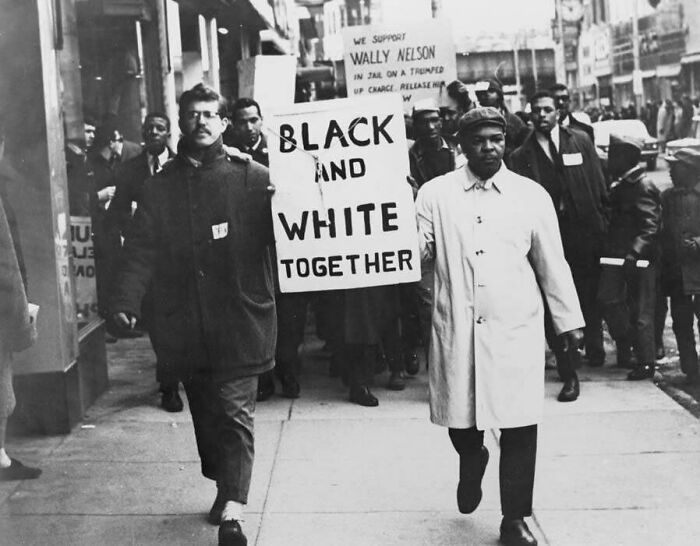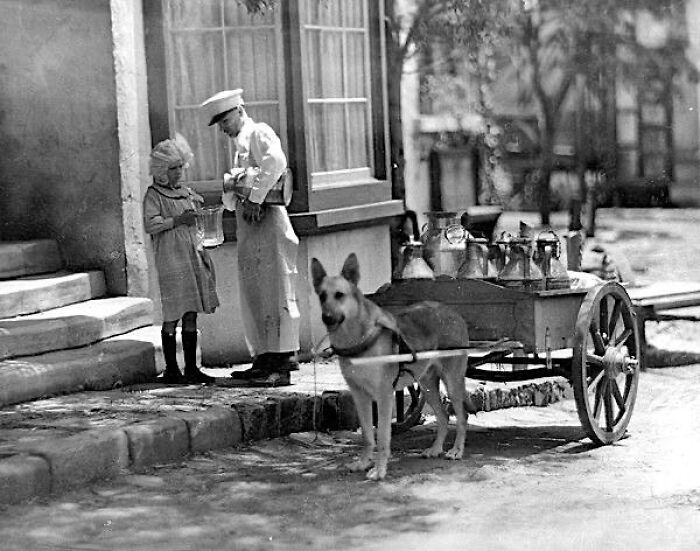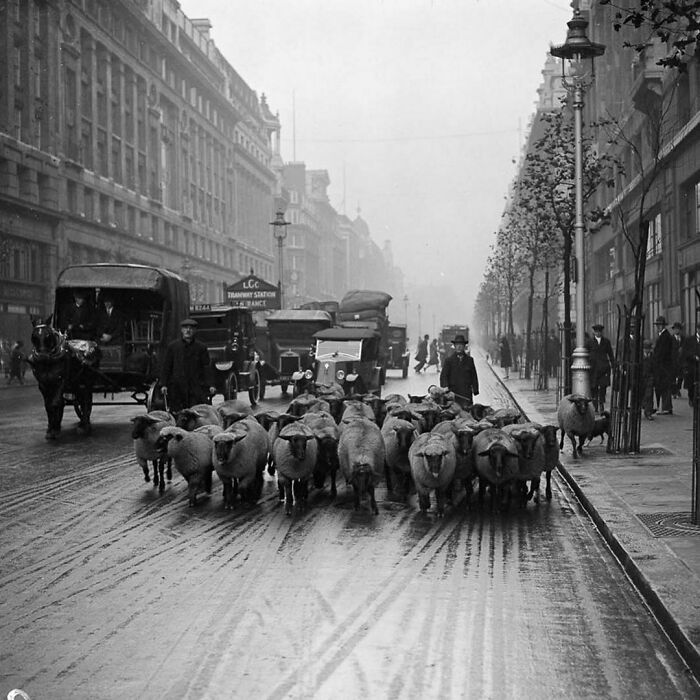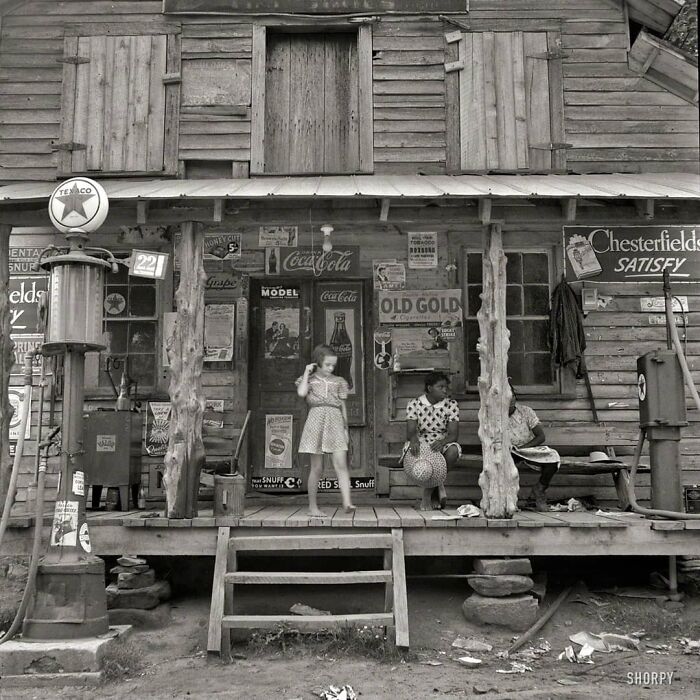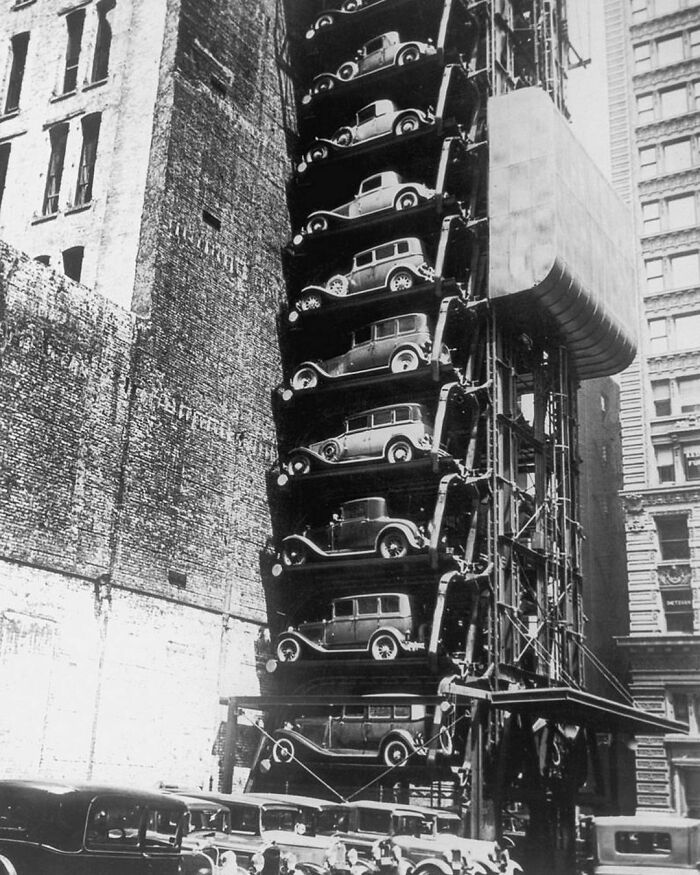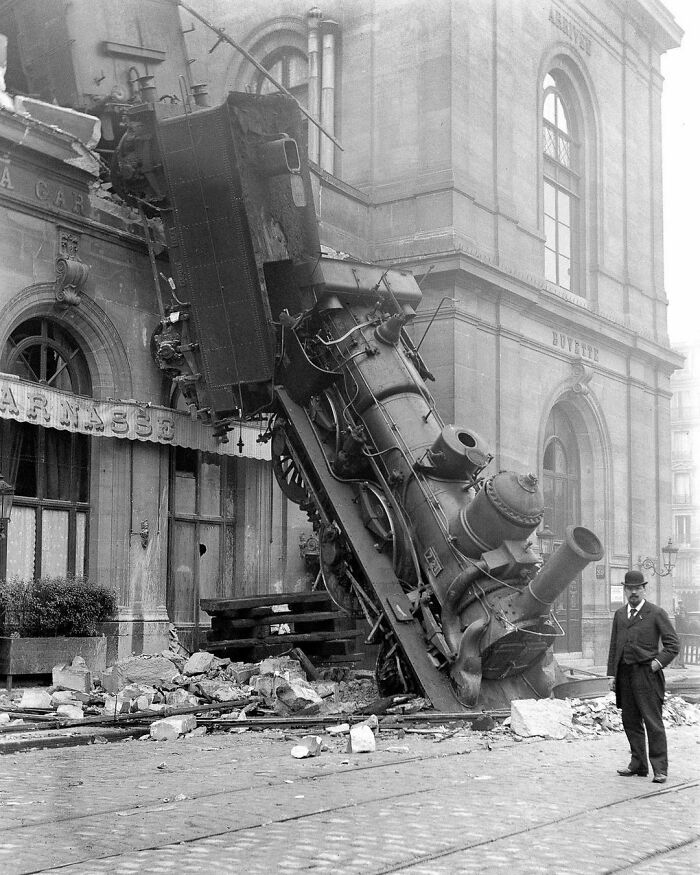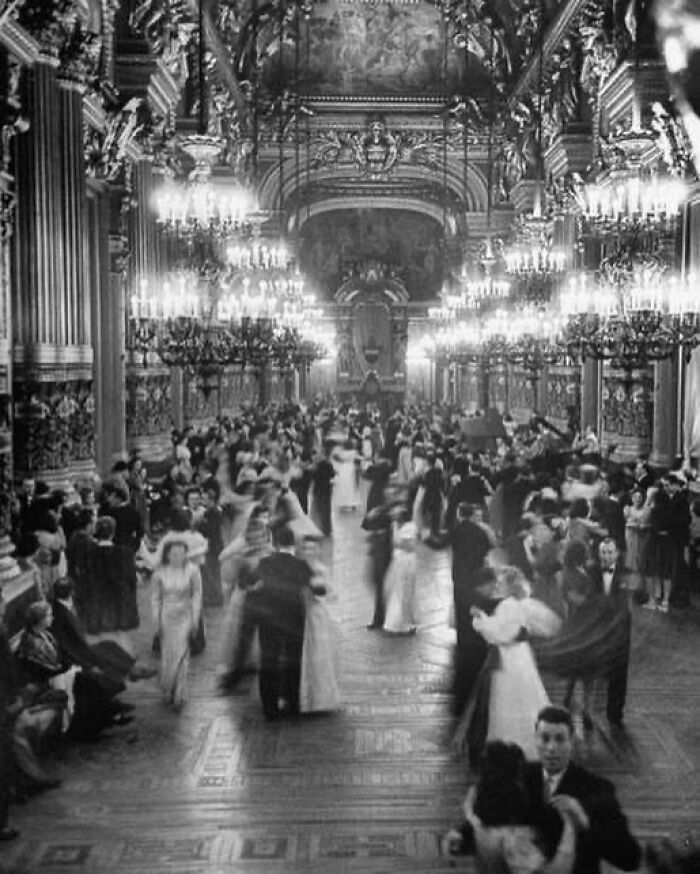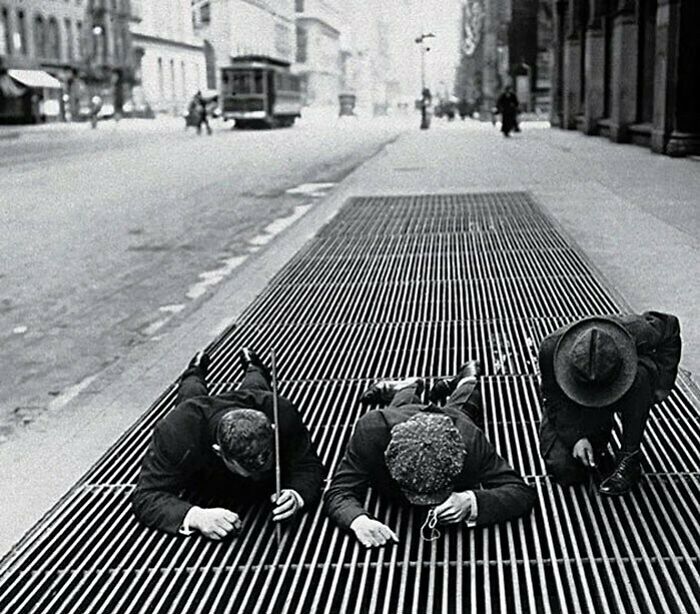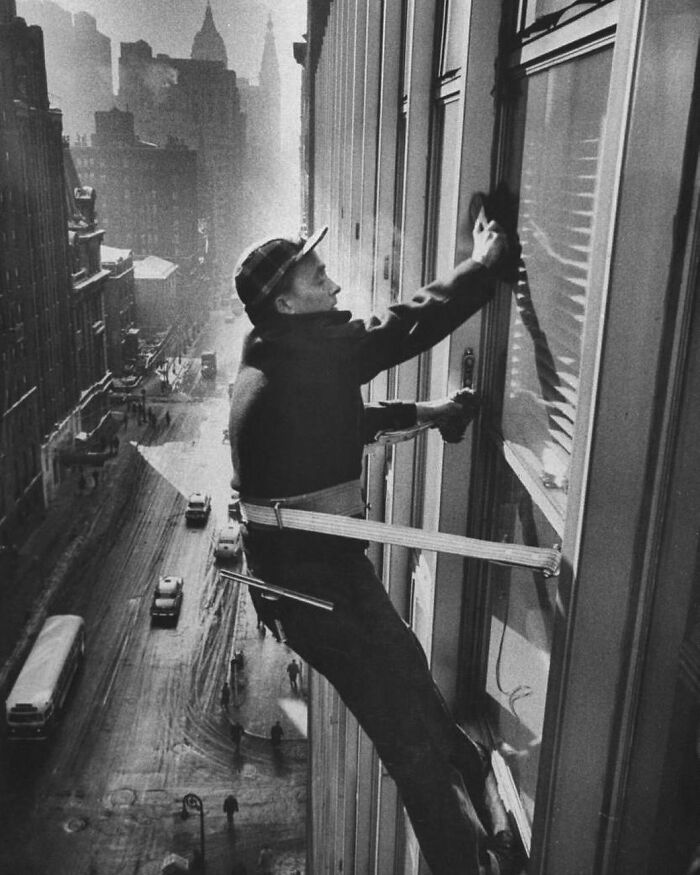
52 Fascinating Moments In History That Might Give You A New Perspective On The Past, As Shared On "History Atlas" Instagram
InterviewToday we'd like for you to take a look at an Instagram account by the name of "The History Atlas". This page collects interesting and unseen historic images and shares them with its whopping 81K followers on the platform.
In fact, most of these images are rather rare or previously unseen by the public, as they depict people, places, and fascinating events from the past. For some of the images, the page also includes captions and explanations about the images, providing historical context and background information to quench your thirst for knowledge of the human past.
The article also includes an exclusive interview with a Hellenistic period historian Dr Elke Close, so make sure to keep on reading.
With that being said, if you'd love to see images of the old Cincinnati library before it was demolished, the creation of the central line in 1898, and many other things, then scroll down below!
This post may include affiliate links.
A White And A Black Men Leading A Civil Rights March In The Late 1950s
To hear some more interesting facts, Bored Panda reached out to Dr Elke Close. Dr Elke Close is a Belgian Classical Languages and History Teacher with a PhD from the University of Edinburgh in the Netherlands who has created her own online education tool related to ancient history, as well as started informative and topic related pages on Instagram and Facebook (@hellenistichistory). She also makes illustrations (@drawingancienthistory on Instagram) inspired by the classical world and is currently working on a colouring book and podcast related to Ancient Greece!
Police Dog On Duty In Side Car. 1930s
The Old Cincinnati Library Before Being Demolished, 1874-1955
You might be wondering what exactly is Hellenistic age, just like Elke did all those years ago. Interestingly enough, the historian became interested in the Hellenistic Age by accident.
“My interest in the Hellenistic Age (i.e. the period of Greek history after the death of Alexander the Great), came about by accident. I had always been interested in Ancient Greece and Rome while in high school, so at University I decided to study Ancient History.
For one of my courses of my bachelor, I had to write about a random revolt that happened to take place during the Hellenistic Age. When I then went on Erasmus to Greece, I had a single course dedicated to the period which was so enthralling that I ended up writing my MA thesis on the Graeco-Roman interactions in the 3rd and 2nd century BC. When I realized that I wanted to pursue a PhD in Classics, needless to say it was going to be about a topic related to Hellenistic History. Now that I’ve finished that project I wanted to keep learning more about the period, as it such a fascinating time period.”
Milk Delivery By Dogcart, Studio City, Ca, Circa 1910
In The 1920s And 1930s, Sheep Were Routinely Introduced Into London Parks To Keep The Grass Under Control And Reduce Mowing Costs
Shepherds competed for the privilege of grazing their flocks on Hyde Park, Kensington Gardens, Clapham Common and other pastures around the city. Sheep are like a lawn care multi-tool. As they cut your grass, they also aerate the lawn with their hooves and spread fertilizer in the form of urine and manure. Sheep don’t require gasoline and oil changes, and although they are certainly not maintenance-free, grass-fed sheep are a sustainable alternative to lawn mower.
A lot of you Pandas may be interested in learning about the key events and developments that took place during the Hellenistic period, so we kindly asked Dr Elke to share some interesting facts with us.
“The Hellenistic period is marked by several events and developments that changed the Ancient World forever. The conquests of Philip V of Macedon and his son Alexander the Great had already changed the Greek world before the start of the Hellenistic period and the death of Alexander the Great in 323 BC without a proper marks the beginning of the Hellenistic period and leads to a series of wars among his successors (the Successor Wars 322 -275 BC) that saw his large empire crumble into the three large Hellenistic Kingdoms: the Ptolemies in Egypt, the Seleucids in the East and the Antigonids in Macedon.” She explained to us.
“From that point onwards, the Hellenistic kingdoms and Rome, for this is also the period in which the Romans turned their interest to the East, become the most important players in the Greek speaking world. The Roman conquest of Macedon in 168 and Greece in 146 BC is the start of a long process in which step by step the Hellenistic world becomes part of the Roman empire. This ends with the defeat of the last of the Hellenistic rulers, the famous Cleopatra VI, at Actium by the soon-to-be-emperor Augustus. Even though the defeat of Cleopatra and Marc Anthony in generally considered to be the end of the period, there is some discussion among scholars for alternative dates such as 146 BC.”
The Soldiers Fed The Polar Bears With Condensed Milk Tins. Soviet Union, 1950
Photo taken during a routine military expedition in Chukchi Peninsula, Soviet Union. It isn’t sure if the Chukchi Peninsula has more people or white bears. The climate is very severe and sometimes weather can be so fierce in winter that the temperature falls 60 C degrees below zero (-76 Fahrenheit).
Snowman On A Soviet Scale. Ussr. Late 1960s
Following our previous question, we asked Close to describe how the Hellenistic world differed from the classical world that preceded it. “The Hellenistic World was different form the classical period in several ways. The Greek mainland was no longer the centre of influence, this position had been taken up by new cities such as Alexandria. These new centres of power and learning resulted in progress in science, literature and art which are marked by a new more complex, individual nature. Because of Alexander’s vast expansion of his empire, the ‘Greek’ world had become so much bigger and the interactions between Greek society and the indigenous people created a new and multicultural society and world that was vastly different than that of the 5th century.
Greek culture and language became more widespread than before and the Greek gods were often syncretised with local gods, creating new deities such as Greco-Egyption god Serapis. Even though there were plenty of Greek poleis, the world was now ruled by kings and consuls in stead of the smaller Greek democracies – which does not mean however that they ceased to play a role in the Hellenistic period. If we compare the Hellenistic and Classical world, one can say that the conquests of Alexander created a cosmopolitan, multicultural society which transcended classical Greece.”
Country Store, North Carolina 1939
Here We See The Creation Of The Central Line In 1898
here are a million fascinating facts and figures about the London Underground, but this rarely seen photograph reminds us just what an engineering feat the construction process was.
And still is - the new Elizabeth Line had to bore right under the entire city, weaving between and through all of the existing underground network and services, often with centimetres to spare. Thinking about having to bore a tunnel to that accuracy in three dimensions makes my brain want to leak out of my ears! There are several TV programmes about the construction on British television.
Dr Close also opened up about her approach to research and writing about historical events and figures. “This kind of depends on the topic I am planning to write about. If it is something that I am completely new to, I tend to start by compiling some basic information – I am not afraid to say that Wikipedia has been rather useful here.” She told Bored Panda. “Then I start to look at more specialized works such as academic books and articles or blog posts which I combine with different kinds of primary sources such as ancient authors, epigraphic texts or numismatic evidence. Due to the fragmentary nature of a lot of the ancient source material, I have found it to be necessary to combine as much of the material as possible in order to get the full picture.”
Gypsy Children Being Taught To Play The Violin In A Courtyard Of One Of The Poorer Houses. Budapest, Hungary, 1939 By William Vandivert
Charitable Chinese Man Feeding A Criminal In A Cangue. Ca. 1905
Petty criminals were sentenced to wear the canque, often for a couple of months, and display themselves in public places. At best they were humbled by dependence on others to be fed, at worst, they might starve to death. The sign on the cangue describes the man's crime.
When asked about what she found most rewarding about her work as a historian, Dr Elke told us this, “Working as a historian – and a Classical language teacher – allows me to write and talk about topics that personally interest me and share those interest with others. Every day I am able to find out more and more things about the ways people live thousands of years or about the ways in which they organised their lives, and to me that is absolutely amazing. There is nothing better than going on holiday to search for traces of those people among long forgotten ruins.”
Woman Hailing A Cab In New York City, 1956
People Sleeping On The Crowded Platform Of Elephant And Castle Tube Station While Taking Shelter From German Air Raids During The London Blitz
The historian also discussed with us how she integrates different perspectives and interpretations of historical events and figures into her work.
“Sometimes it is easy to forget that our historical sources were also made from a certain perspective. While is true for any kind of source, including the less obvious ones such a 19th century photo, I find that when creating a narrative, it can already be enough to give an overview to your readers of the different interpretations that exist in the modern scholarship about a certain event or figure. Of course, this rather depends on what kind of work you have to produce, sometimes you just do not have the room to do so as can be the case with shorter blogs or social media posts.” She said to us.
Viet Cong Medics Operate On An Injured Cambodian Solider, 1970
Finnish Cavalry Training 1930s
The historian also told us how she thinks the study of history can inform our understanding of the present day. “The study of history is a tool for those of us who want to understand how certain things today were shaped by events in the past. It provides us with analytical tools and empowers our critical thinking, so that by looking at what came before, we can more easily understand what kind of patterns lead to certain problems and how can we avoid or solve them. Studying the past is looking at ways in which our society changed over time and how these changes not only had an impact on humanity in general but on us as individuals as well. History is everywhere and if you learn how to interpret it, it can be the greatest tool to understand the present society.” Dr Elke shared with Bored Panda.
High School Teenagers 1947
Police Officer Guarding A Pharmacy In High-Flood Waters, Ontario, 1974
When asked for advice on pursuing a career in the field of history, Dr. Elke Close emphasized the importance of not allowing others to discourage you from pursuing your passion, and to have confidence in your ability to succeed. “Do not let anyone discourage you from pursuing your passion, you just have to know how you want to get started.” She said. “Aside from the traditional careers such as history teacher or university lecturer, there are so many exciting ways in which you can work with history: you can create your own projects, apply for a heritage job, produce books and podcast, become an advisor for historical games… The list is endless. Just be sure to keep on reading and developing your knowledge about your area of interest!”
An Elevator Parking Lot In New York. C.1920
A Man Standing On The First Cables During The Construction Of The Golden Gate Bridge, With The Presidio And San Francisco In The Background. 1935
Dr Close expressed her excitement about the increasing use of social media and digital tools to make history more accessible and engaging for a wider audience. “I love that there are more and more people using social media and digital tools to tear down the barrier that history has to be boring or is only applicable for a certain group of people. Those stuffy lessons from high school or boring documentaries belong to the past. Why not use games or AI to teach subject in classes or give workshops in museums?” She shared at the end of the interview.
Moving A House Using Horses. San Francisco, 1908
Sunday At Coney Island 1949
We hope you found our exclusive interview with the renowned hellenistic period historian, Dr Elke Close, to be informative and enjoyable. We also hope that the accompanying article provided a deeper understanding and appreciation of the fascinating topic of history that surrounds our world. Thank you for joining us for this engaging and educational discussion, dear Pandas!
On Oct. 22, 1895, The Express Train From Granville To Paris
On Oct. 22, 1895, the express train from Granville to Paris was running late.
Hoping to arrive on time, the driver increased the speed of the steam locomotive, which was carrying 131 passengers.
As it entered the Montparnasse terminal, the train was traveling approximately 25 to 37 miles per hour.
The air brake either failed or was applied too late, and the conductor was too preoccupied with paperwork to throw the hand brake in time. The train crashed through the buffers at the end of the track, crossed the 100-foot concourse and burst through the wall of the station, tumbling onto the street below.
A woman on the sidewalk who was minding her husband's newsstand was killed by falling masonry. Five people on board the train were injured.
For four days, the train stood intact outside the station, drawing crowds of curious onlookers.
The driver was fined 50 francs.
Kids Playing In A Fire Hydrant In NYC In The Summer Of 1954
The Barge "Marine Angel" Negotiates A Turn Through The Upraised Michigan Ave. Bridge, Chicago, 1953
A New York Construction Worker Walks Along A Girder High Above The City Streets, Circa 1950
This Is Believed To Be The Earliest Photograph Of NYC. Taken At Broadway Between Franklin And Leonard Streets, May 1850
Couples Dancing In The Grand Foyer Of The Paris Opera House At A Victory Ball
Three Boys Are Fishing For Change During The Great Depression, New York, 1930
Daytona Beach 1903
Delta Delta Delta Sorority Sisters, University Of Texas, Austin, 1944
Kids Playing On The Lower East Side, New York, 1963
Boys Sidewalk Sledding On Steep San Francisco Hill Street, 1952
nooo concrete wounds are like one of my worst nightmares 😭😭 it’s like they hurt 2x worse than normal wounds
San Francisco’s Golden Gate Bridge
A stunning technological and artistic achievement, opens to the public after five years of construction. On opening day–“Pedestrian Day”–some 200,000 bridge walkers marveled at the 4,200-foot-long suspension bridge, which spans the Golden Gate Strait at the entrance to San Francisco Bay and connects San Francisco and Marin County. On May 28, the Golden Gate Bridge opened to vehicular traffic.
The Grand Prix In Monaco, 1937
R.m.s. Mauretania 1909
Looks like she’s in dry dock, possibly for maintenance; the lower blade on the starboard propeller looks like it’s been damaged.
The Beatles' Rooftop Concert In 1969
Man Standing In The Lumberyard Of Seattle Cedar Lumber Manufacturing, 1939
Belgium Coal Miners Crammed Into A Coal Mine Elevator, Coming Up After A Day Of Work, Circa 1900
Drive-In Theatre. Chicago 1951
Times Building Under Construction, 1903
Fashion Show On Board The New York, New Haven, And Hartford Railroad's Show Train, 1949
Paris Viewed From The Top Of Notre Dame, 1955
Los Angeles Development Boom Of The 1950s
Second Class Saloon, Nome, Alska, July 1, 1901
Mount Adams Incline And Price Hill Incline. Cincinnati Ohio 1906
30 Men Prove The Strength Of The Dkw 'Front Reichsklasse' Type F7 Car, Amazingly Built By Wooden Coachwork 1930s
Vintage Tennis Photo Women Smoking Cigarettes 1930s
Tourists Sunbathing And Drinking Tea On Top Of The Great Pyramid Of Giza, 1938
is it just me or do we see this photo on like every “antique photo” post-
Rms Mauretania (Also Known As The "Maury") Was An Ocean Liner Of The Cunard Line, Launched On 20 September 1906
At the time, she was the largest and fastest ship in the world. Mauretania became a favourite among her passengers. After capturing the Blue Riband for the fastest transatlantic crossing during her 1907 inaugural season, Mauretania held the speed record for 22 years.
I used to go to flea markets/house clearances and found a diary given to a passenger travelling on the Mauritania to Canada via New York in 1934. So began my slight obsession with finding out who she was (Miss E C Clough, Holly Lodge Mansions, London N6) and about more the Mauritania. This was before the internet and didn’t get very far. Started searching on line around 2015 and have got such things as passenger lists but Miss Clough remains an enigma. She was born into a poor family so what took her to live in London and then travel as a first class passenger and did she stay in Canada or return to the UK.
Window Cleaners Cleaning High Rise On Madison Avenue. 1957
New York City Deputy Police Commissioner John A. Leach, Right, Watching Agents Pour Liquor Down A Manhole Following A Raid During Prohibition 1921
Just picturing a bunch of mobsters at the bottom of the drain filling up barrels and shipping them back to the bar.
That Ted Bundy dude really came with the goal to get the most down votes on a post
“Ted Bundy” chose his pseudonym with care, but in the end, he’s the type that promises a Big Mac and shows up with a french fry.
Load More Replies...Why do so many of these photos show up on every list of historic photographs? Can’t the posters come up with something new?
BoredPanda sadly doesn’t write a lot of their own content anymore. I think a lot of listicle content on sites like BoredPanda and Buzzfeed is copy and pasted from Reddit and unfortunately not edited for some bizarre reason.,
Load More Replies...I wonder what kind of life these people had, are some still alive today. The beginning of Cheers with the old photos has me doing the same thing
Definitely some 60s kids are alive and well (my grandma is one of them) 40s kids are great grandparents, the 20s kids are in nursery homes (and are over 100 now) and the kids born before the 20th century... Aren't around anymore, sadly.
Load More Replies...That Ted Bundy dude really came with the goal to get the most down votes on a post
“Ted Bundy” chose his pseudonym with care, but in the end, he’s the type that promises a Big Mac and shows up with a french fry.
Load More Replies...Why do so many of these photos show up on every list of historic photographs? Can’t the posters come up with something new?
BoredPanda sadly doesn’t write a lot of their own content anymore. I think a lot of listicle content on sites like BoredPanda and Buzzfeed is copy and pasted from Reddit and unfortunately not edited for some bizarre reason.,
Load More Replies...I wonder what kind of life these people had, are some still alive today. The beginning of Cheers with the old photos has me doing the same thing
Definitely some 60s kids are alive and well (my grandma is one of them) 40s kids are great grandparents, the 20s kids are in nursery homes (and are over 100 now) and the kids born before the 20th century... Aren't around anymore, sadly.
Load More Replies...
 Dark Mode
Dark Mode 

 No fees, cancel anytime
No fees, cancel anytime 






